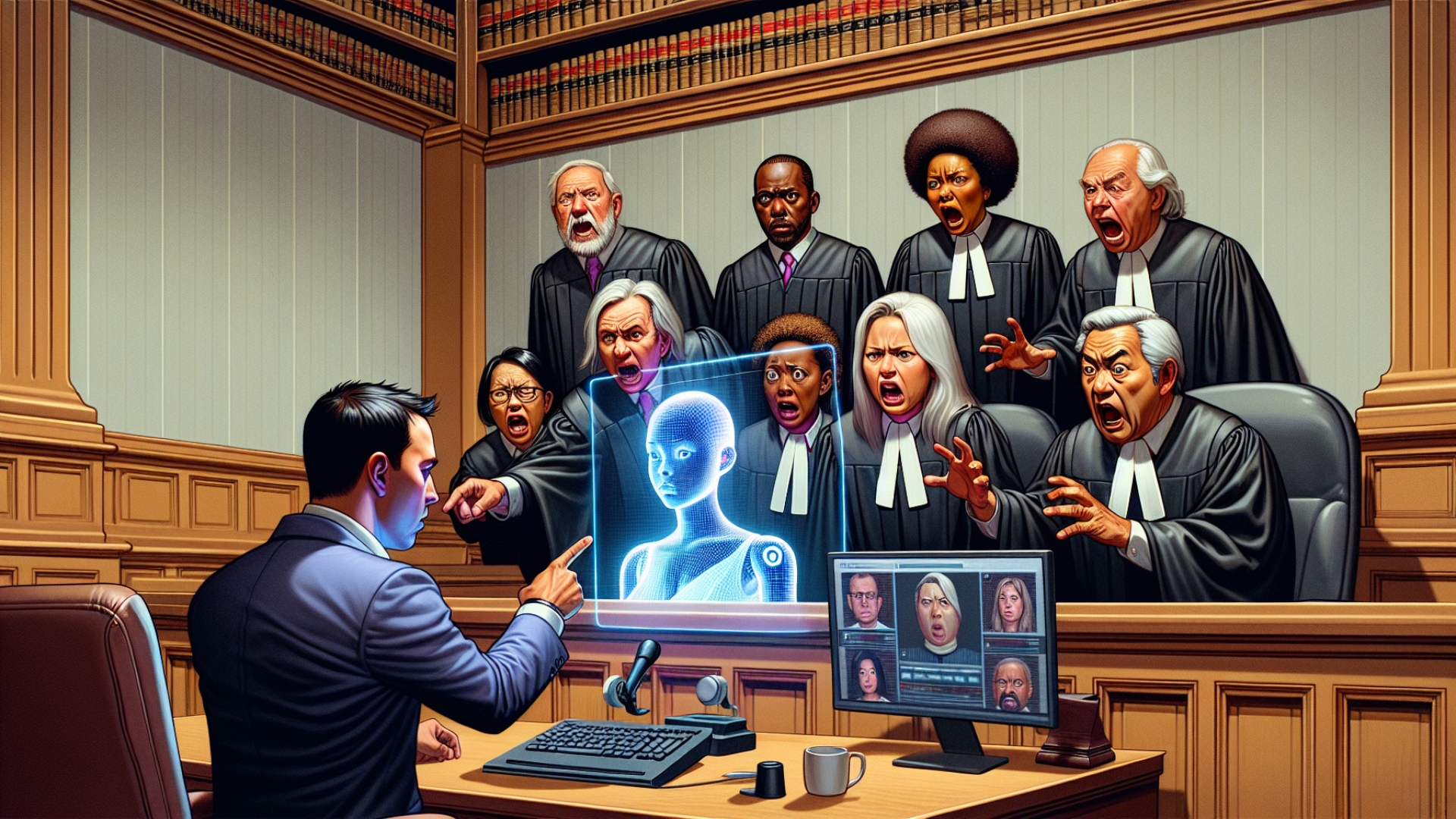The ever-evolving landscape of artificial intelligence (AI) is pushing boundaries, and as we at Digital Tech Explorer often observe, its applications are expanding into unexpected territories, including the intricate legal system. A striking example of this intersection recently unfolded in the New York State Supreme Court, where Jerome Dewald, representing himself in an employment dispute, sought to employ a virtual presenter powered by AI for his opening statement. Dewald attributed this unusual request to a personal challenge with clear speech, noting a tendency to mumble. While he initially aimed for a personalized digital replica from a San Francisco tech firm, time constraints led him to use a generic AI-generated persona—a “smiling, youthful-looking man with a sculpted hairdo, button-down shirt and sweater”—projected onto a courtroom video screen.
The Court’s Reaction and Dewald’s Apology
The courtroom proceedings took a swift turn. As the pre-recorded presentation commenced, Dewald’s digital spokesman began, “May it please the court, I come here today a humble pro se before a panel of five distinguished judges.” Judge Manzanet-Daniels interjected almost immediately, questioning, “Okay, hold on, is that counsel for the case?” and promptly ordered the video stopped. Dewald conceded, “I generated that. It’s not a real person.” This revelation drew sharp disapproval from the judge, who remarked, “It would have been nice to know that when you made your application. You did not tell me that, sir… I don’t appreciate being misled.”
Reflecting on the judiciary’s response, Dewald later remarked, “They chewed me up pretty good,” and acknowledged, “The court was really upset about it.” He subsequently issued a formal apology, explaining his speech difficulties and affirming no intent to cause harm or disrespect. Dewald also clarified that his request to play a pre-recorded video seemingly didn’t cover the use of an AI-driven persona for delivering his arguments.
AI in the Broader Legal and Media Landscape
The convergence of artificial intelligence and legal support systems isn’t unprecedented. For example, the startup DoNotPay has garnered attention for its AI-powered legal assistant, aimed at aiding defendants in navigating court procedures.

However, DoNotPay encountered regulatory challenges from the FTC last year regarding insufficient testing to back its efficacy claims. Outside the legal sphere, AI-generated personalities are emerging in various industries. News startup Channel 1, for instance, showcased its potential with a proof-of-concept video featuring virtual news anchors, highlighting the expanding reach and sophistication of this technology.

Jerome Dewald’s bid to employ a digital persona for courtroom arguments in a US court could be a pioneering moment, even though his virtual advocate was silenced early on. This event underscores a potential, though contentious, use of AI within the justice system. Such innovations could, in theory, provide alternatives for those unable to secure or afford legal counsel. Nevertheless, this specific endeavor failed to win judicial acceptance.
At present, while sophisticated AI utilities like summarizers (e.g., ChatGPT) may find use within the legal framework for tasks such as dissecting complex legal texts, the notion of direct AI advocacy in court has yet to secure a legal precedent. As TechTalesLeo often explores, the human element in such critical roles remains a significant consideration.

The legal system continues to deliberate on how, or even if, artificial intelligence can be formally incorporated into courtroom advocacy, a topic Digital Tech Explorer will continue to monitor closely.

